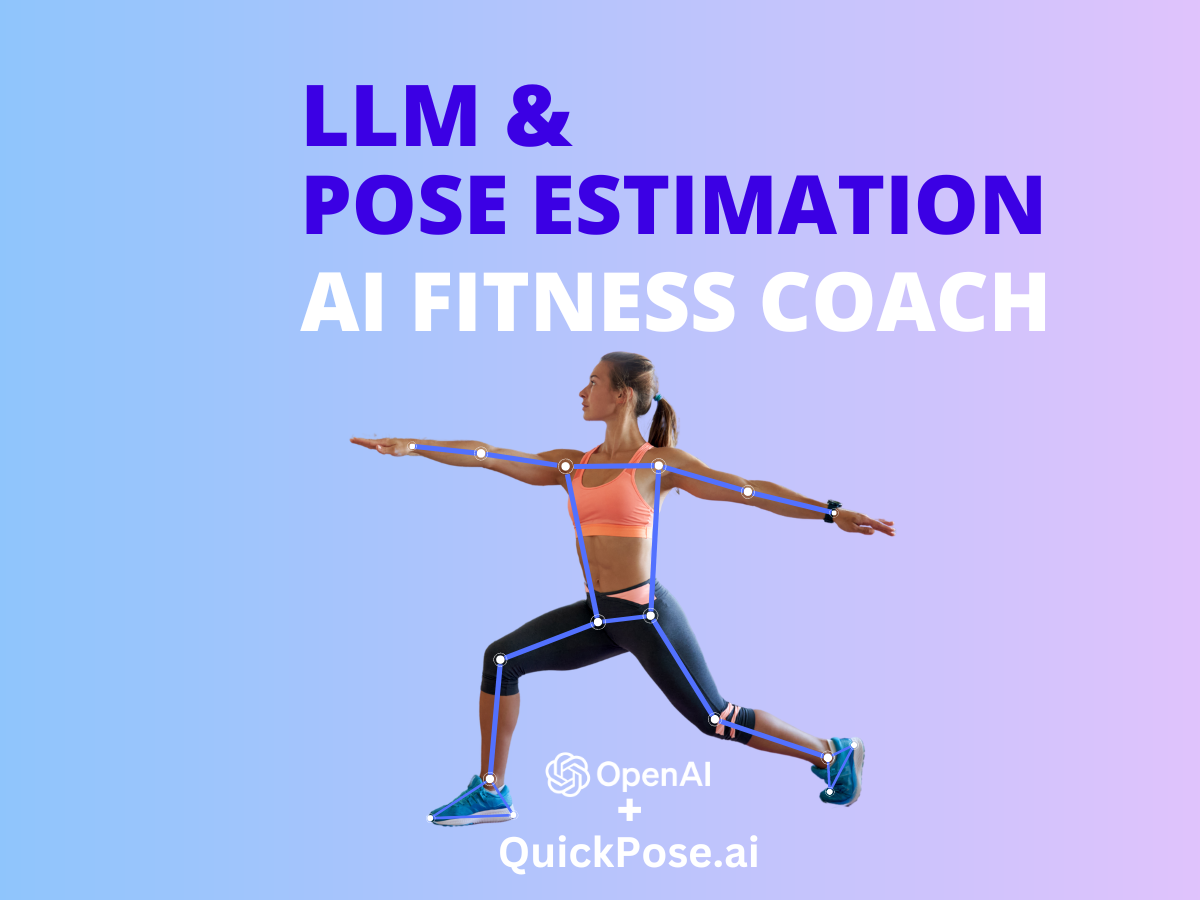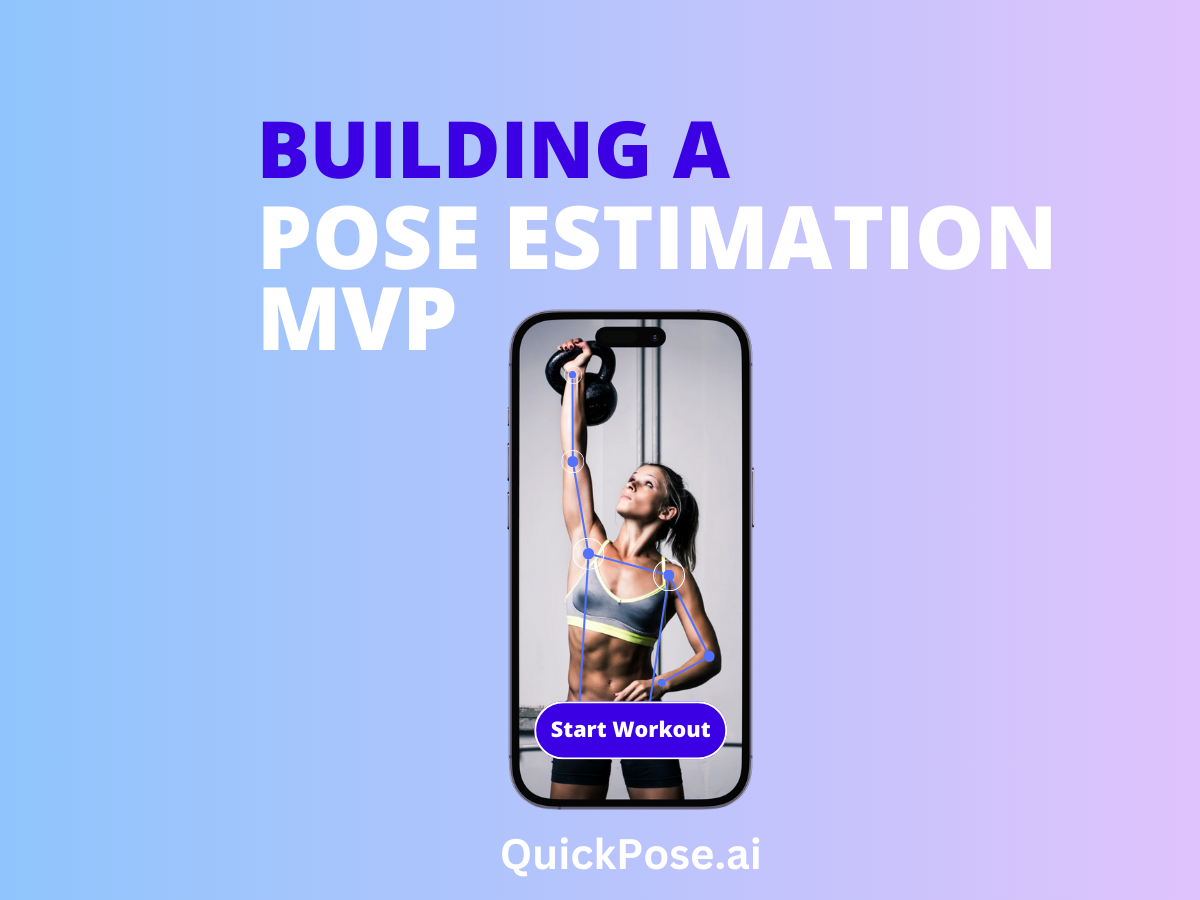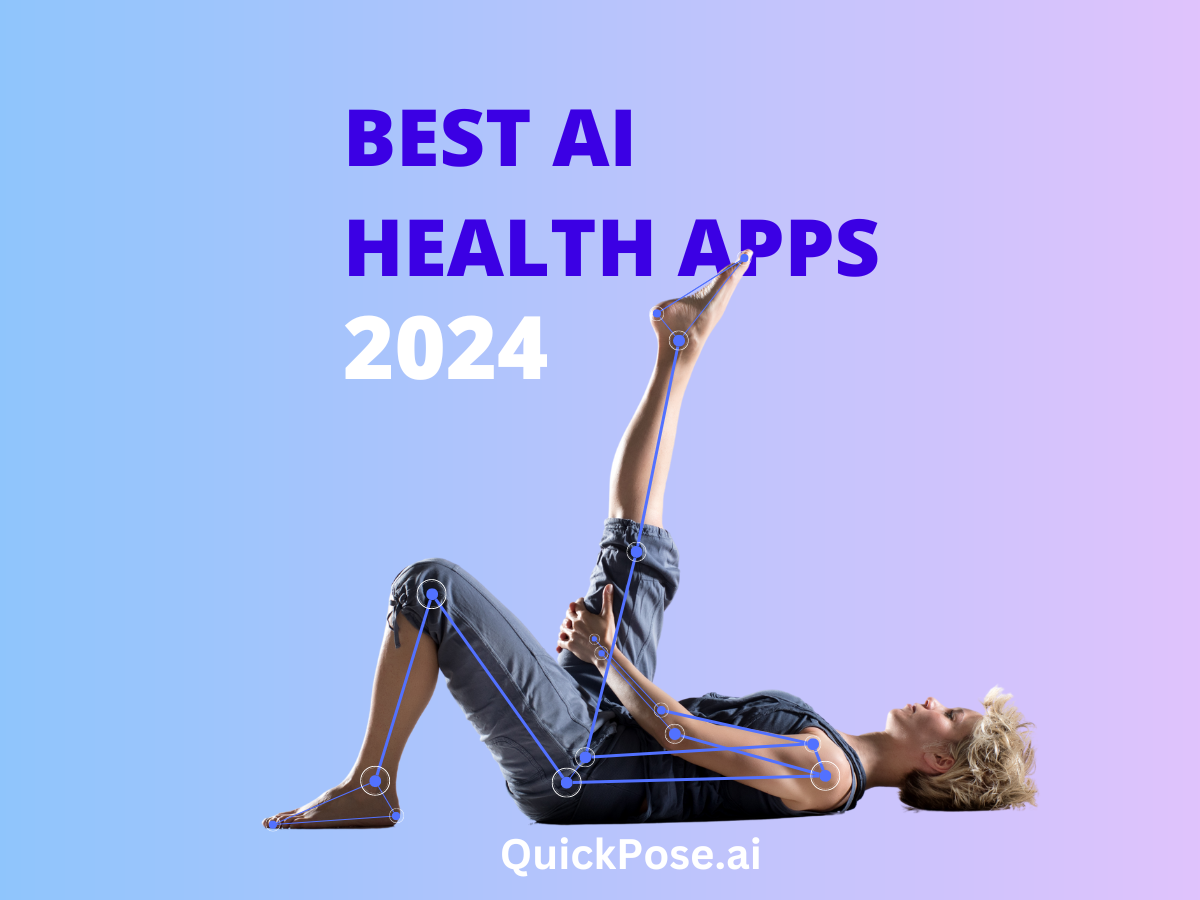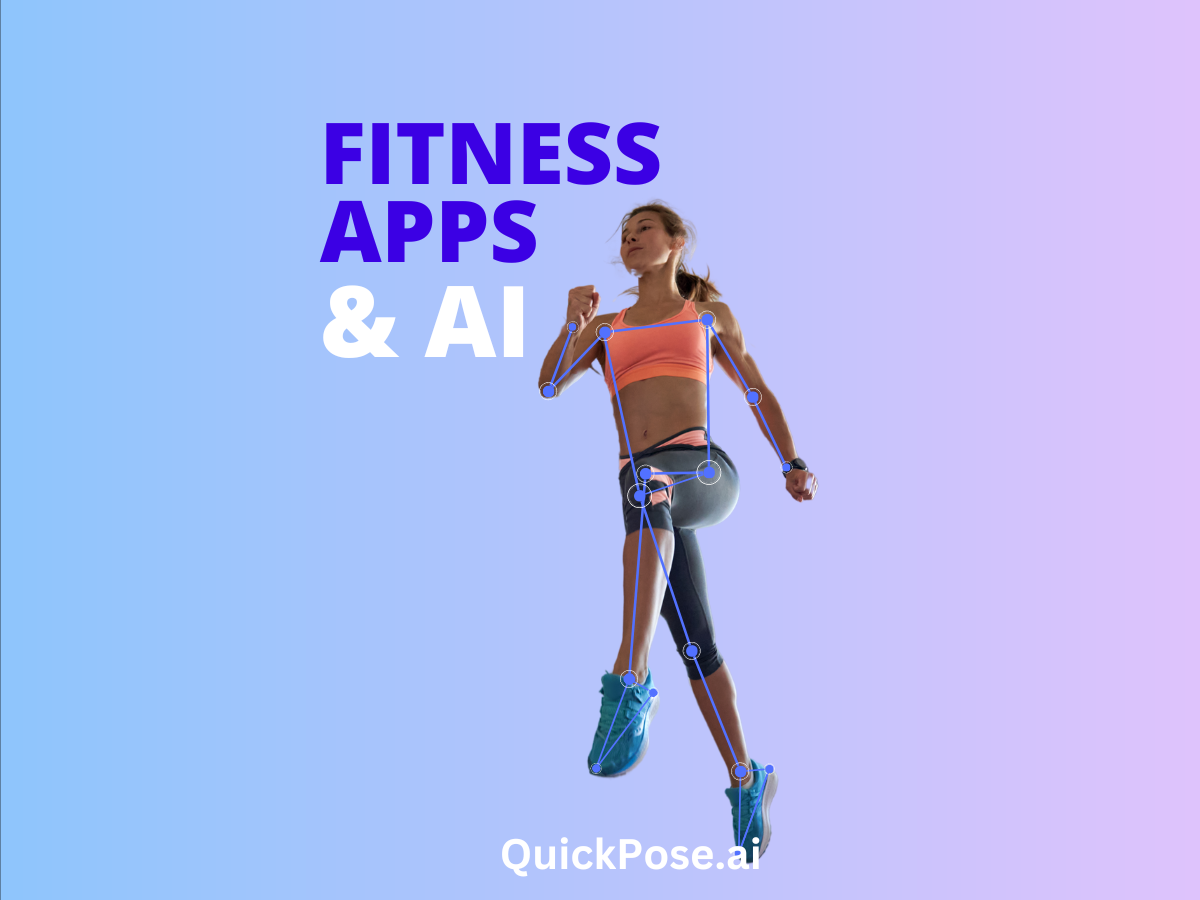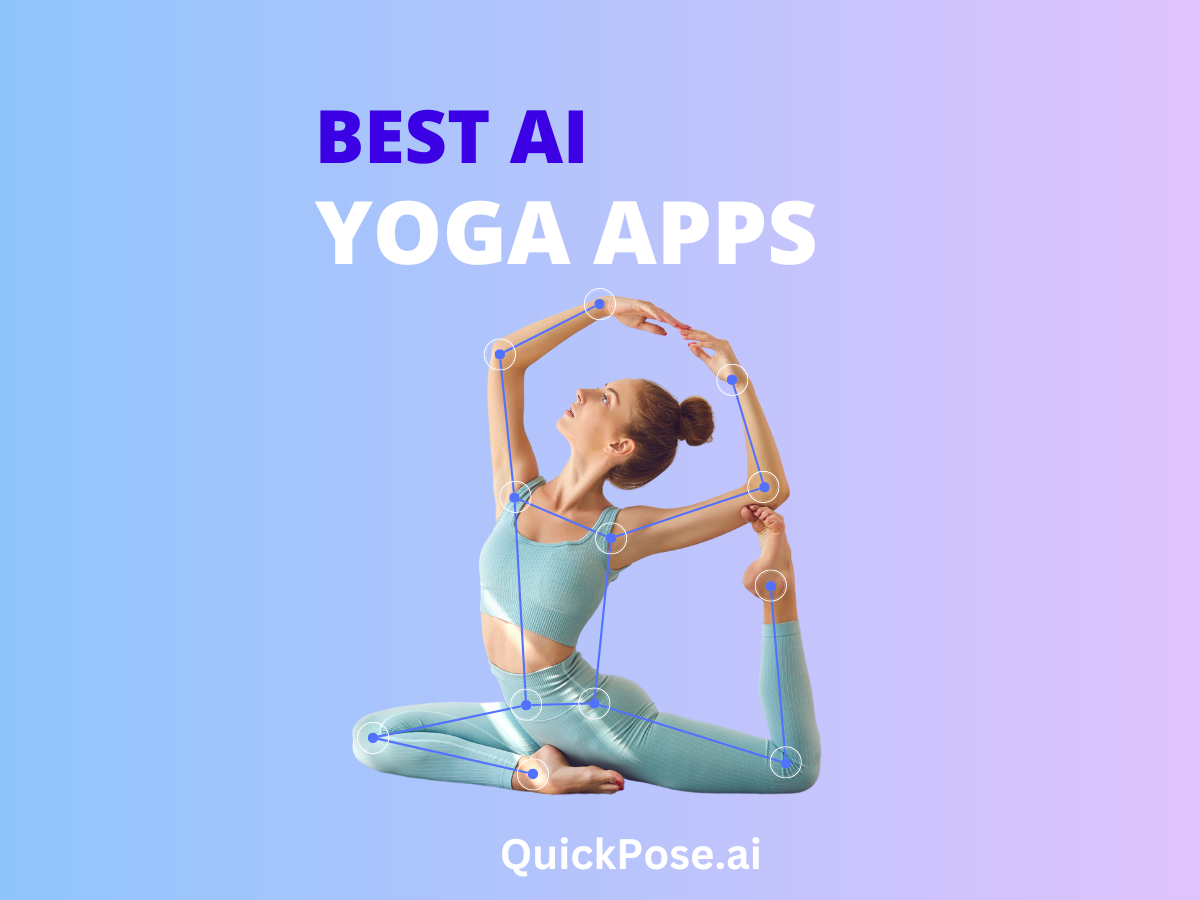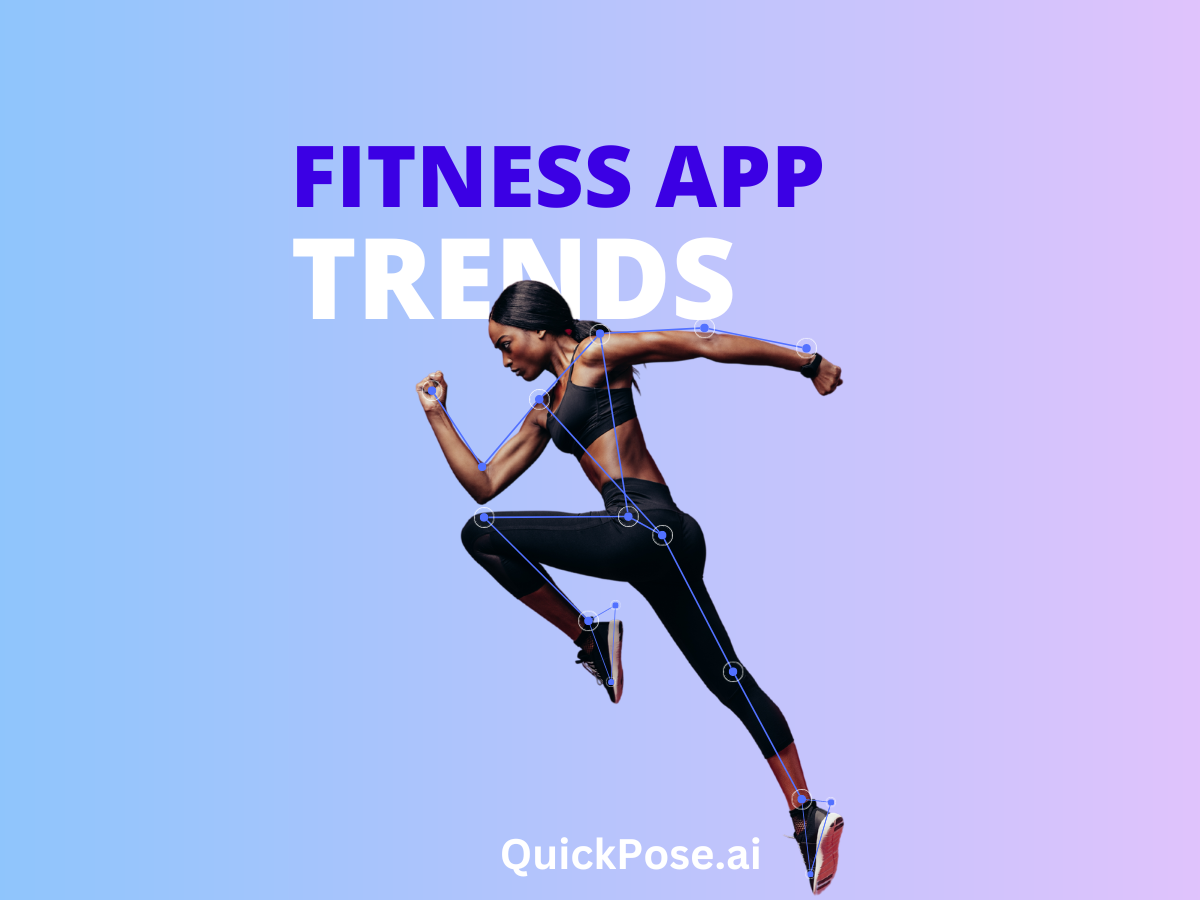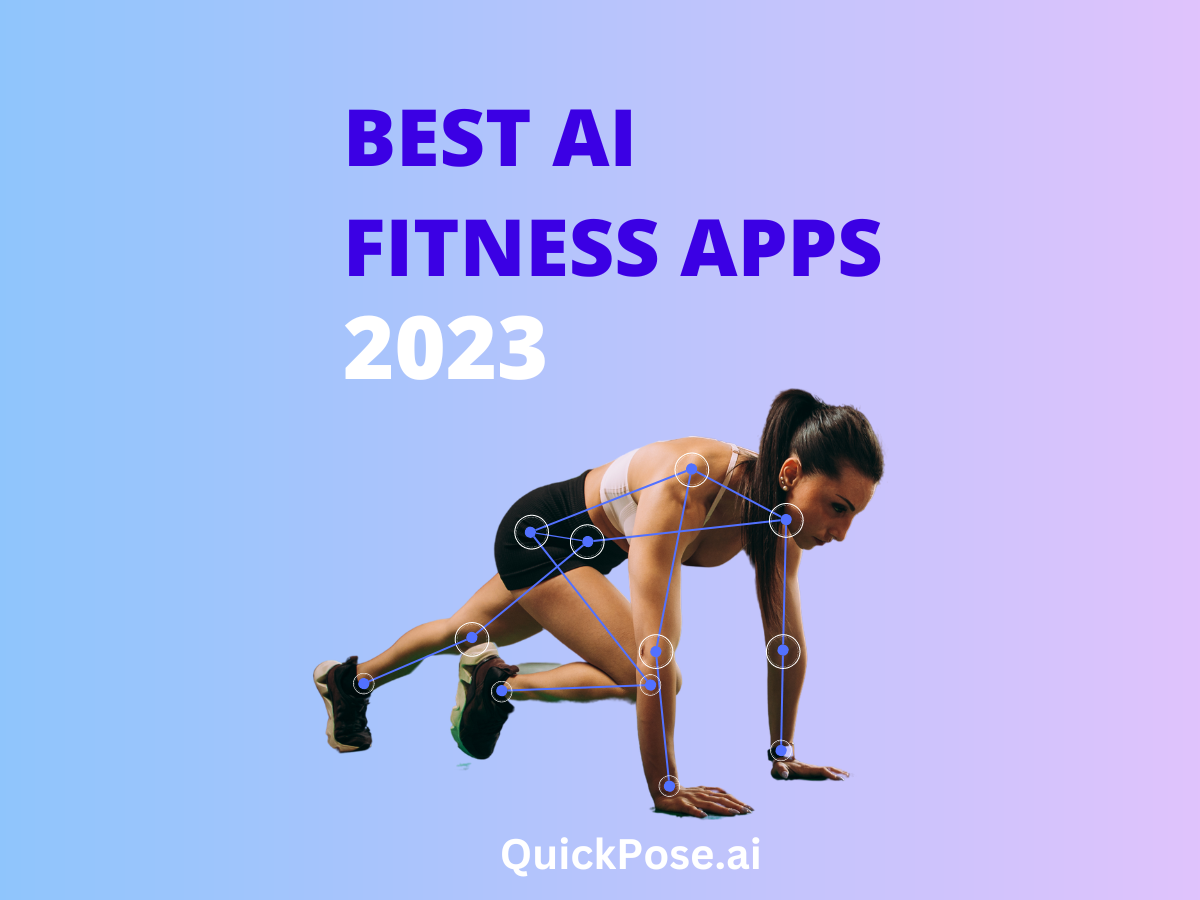Imagine getting the AI voice of Arnold Schwarzenegger in his prime motivating you in your AirPods while you’re at the gym, to a health app walking you through a health assessment, that correlates your range of motion with the most relevant research, Pose Estimation and LLMs offer incredibly powerful opportunities when integrated together.
The LLMs we use today are the worst that we will ever use. They are constantly getting better and it’s only a matter of time until the line between LLM output vs real human output becomes more and more blurred. Let’s look at the digital fitness revolution and how pose estimation and LLMs working together is a powerful combination- for engineers, product managers, and the user.
LLMs and Pose Estimation Technology today
At the heart of this evolution are LLMs, the architects of conversation, capable of interpreting and generating human-like text with astonishing coherence. Their ability to understand context and nuance makes them invaluable for creating interfaces that communicate, motivate, and personalise the fitness journey.
Parallel to the advancing technology of LLMs, Pose Estimation technology interprets human movement – from counting reps to providing insights about quality of movement. It offers a digital eye that discerns human posture in real-time, ensuring exercises are performed correctly, thereby maximising effectiveness and minimising the risk of injury.
The User-LLM interface
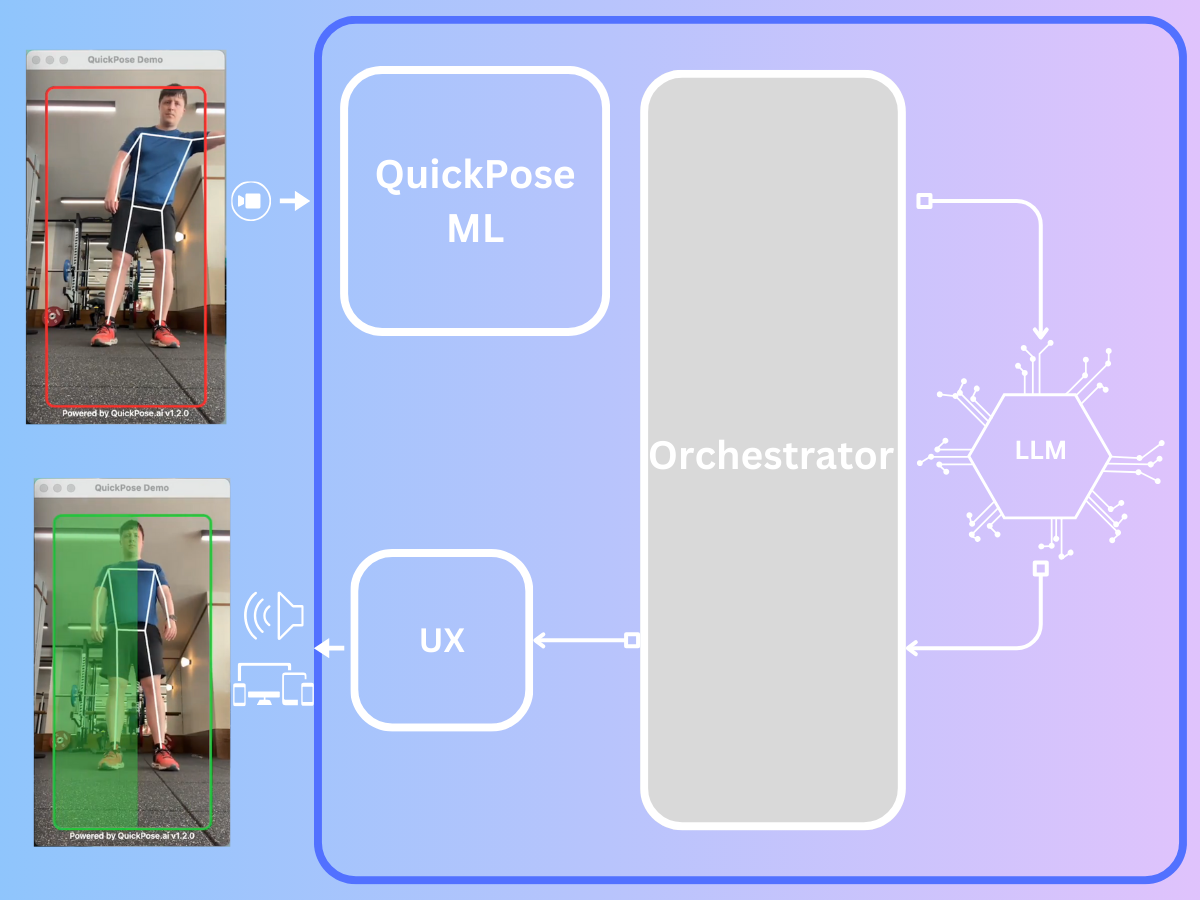
- From the camera’s input, Pose Estimation detects the location of their body parts, turning movements into digital data.
- This is sent to QuickPose Machine Learning (ML) Algorithms which detect poses and provide feedback.
- Data is then put into the Orchestrator which strings QuickPose and the LLM together. The orchestrator creates prompts from the feedback, and the LLM generates relevant and timely responses.
- The responses can be delivered by Text to Speech, on-screen text, or through an avatar.
- The user receives the feedback. If relevant, the user responds to the feedback- either verbally or by changing their actions, and the cycle continues.
Interaction Between Pose Estimation and LLM in an AI Fitness Coach
Here is a detailed breakdown of how LLMs can interact with pose estimation to create unique user experience in an AI Fitness coach:
- Real-time Feedback and Form Correction:
- The user begins an exercise routine.
- The Pose Estimation system analyses the video input from the camera, pinpointing the positions of various body parts and translating these movements into digital data.
- This data is then processed by the QuickPose ML algorithms, which assess the user’s pose against a repertoire of correct exercise forms.
- The discrepancies identified by QuickPose are sent to the Orchestrator, which integrates QuickPose feedback with the LLM. The Orchestrator formulates prompts based on this feedback.
- The LLM processes these prompts and crafts personalised feedback for the user.
- This feedback is conveyed to the user through audio or visual means (e.g., Text to Speech, on-screen text, or an avatar representation), guiding them towards achieving the correct form.
- The user adjusts their actions in response to the feedback, and this iterative process continues to enhance the exercise form in real-time.
- Personalised Exercise Selection and Difficulty Adjustment:
- The LLM considers the user’s fitness goals, experience level, and feedback from QuickPose ML algorithms
- Based on this data, the LLM recommends suitable exercises or variations (e.g., beginner vs. advanced push-ups).
- If the pose estimation consistently detects poor form, the LLM might suggest easier modifications or recommend alternative exercises.
- The LLM can personalise the workout difficulty in real-time, increasing reps/sets or suggesting weighted variations based on successful pose execution.
- Encouragement and Motivation:
- Pose estimation data can reveal progress over time (e.g., improvement in form).
- The LLM analyses this data provided by QuickPose ML algorithms and provides motivational messages, celebrating achievements and encouraging continued effort.
- The LLM can personalise its language based on the user’s preferences and behavioural science to generate positive outcomes.
Get Access to Our TestFlight Demo
Check out QuickPose iOS SDK abilities in our TestFlight Demo app.
LLM Sports coach. Use cases in Basketball, Golf, and Tennis coaching
LLMs and pose estimation can be incredibly useful for analysing and improving performance in various sports, not just general fitness. Here are some specific examples for basketball, golf, and tennis:
AI Basketball Coach with Pose Estimation and LLM:
- Shooting Form Analysis: Pose estimation can track the entire shooting motion, from ball grip to release. The ML Algorithms can compare this data to ideal form, identifying flaws in footwork, hand placement, or follow-through. It can then provide real-time audio or visual cues for correction.
- Advanced Analytics: By analysing player movements during scrimmages or games, the ML algorithms can identify areas for improvement, such as positioning on defence or offensive cuts. Pose estimation data can track jump height and explosiveness for dunks or layups.
AI Golf Coach with Pose Estimation and LLM:
- Swing Technique: Pose estimation can track the entire golf swing, from posture to club position at impact. The ML algorithms can compare this to swing models of professional golfers, identifying issues with backswing, weight transfer, or follow-through. The orchestrator passes this data to the LLM where it can provide real-time feedback and suggest drills to improve specific aspects of the swing.
AI Tennis Coach with Pose Estimation and LLM:
- Serve Analysis: Pose estimation can track the entire serving motion, from toss to racquet contact. The ML algorithms can identify issues with arm motion, body positioning compared to perfect examples. Passing this data through to the orchestrator to the LLM, it can provide real-time feedback and suggest drills to improve serve speed, accuracy, and spin.
- Footwork and Positioning: Pose estimation can track footwork patterns during rallies. The LLM can analyse movement efficiency and suggest optimal positioning for different types of shots and court coverage.
Are you looking to build your own AI Fitness coach with LLM integration? Request More Information from QuickPose and our team can discuss our capabilities. We offer custom development as well as access to our SDK.
Need help building an AI project?
At QuickPose, our mission is to build smart Pose Estimation Solutions that elevate your product. Schedule a free consultation with us to discuss your project.
